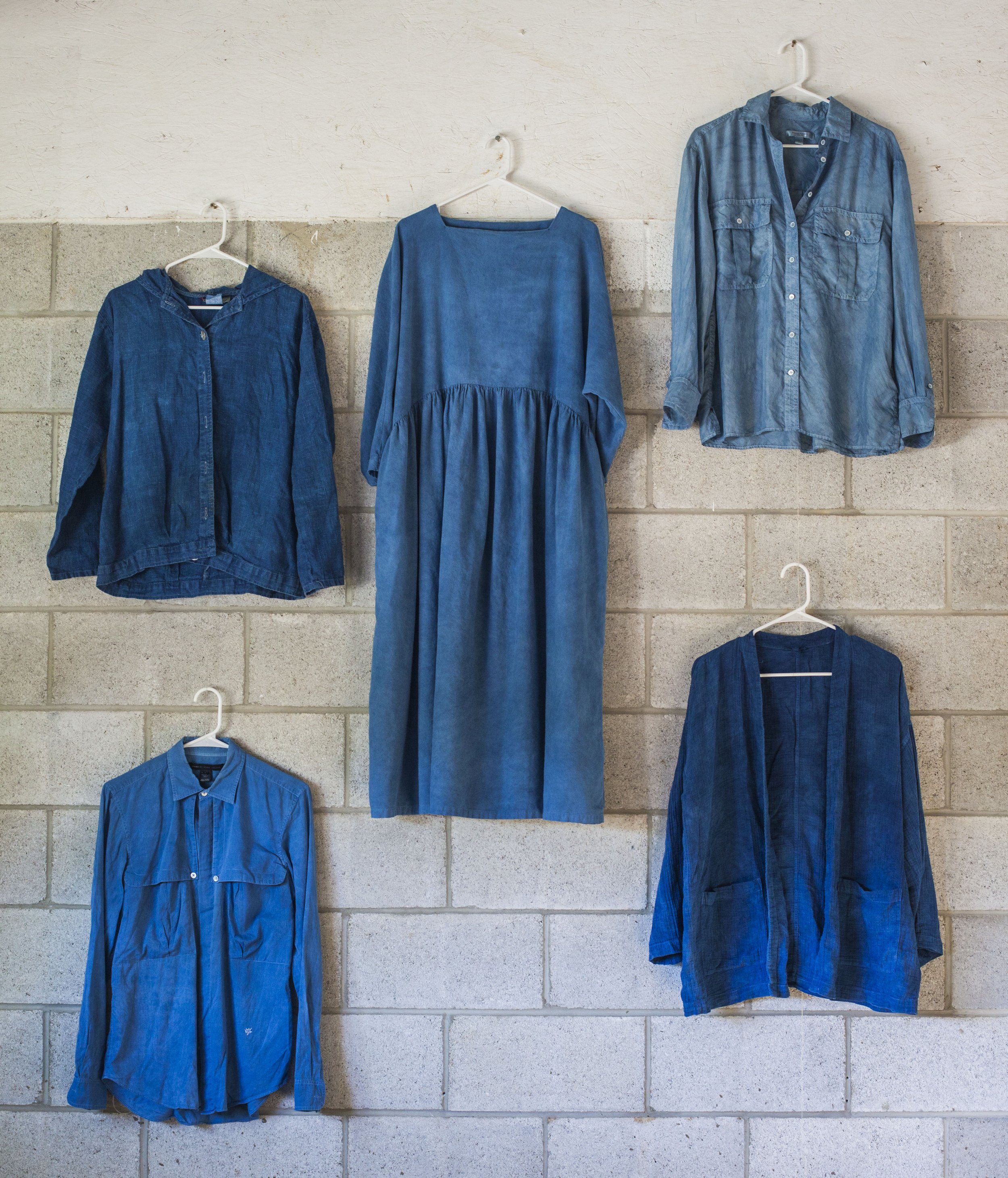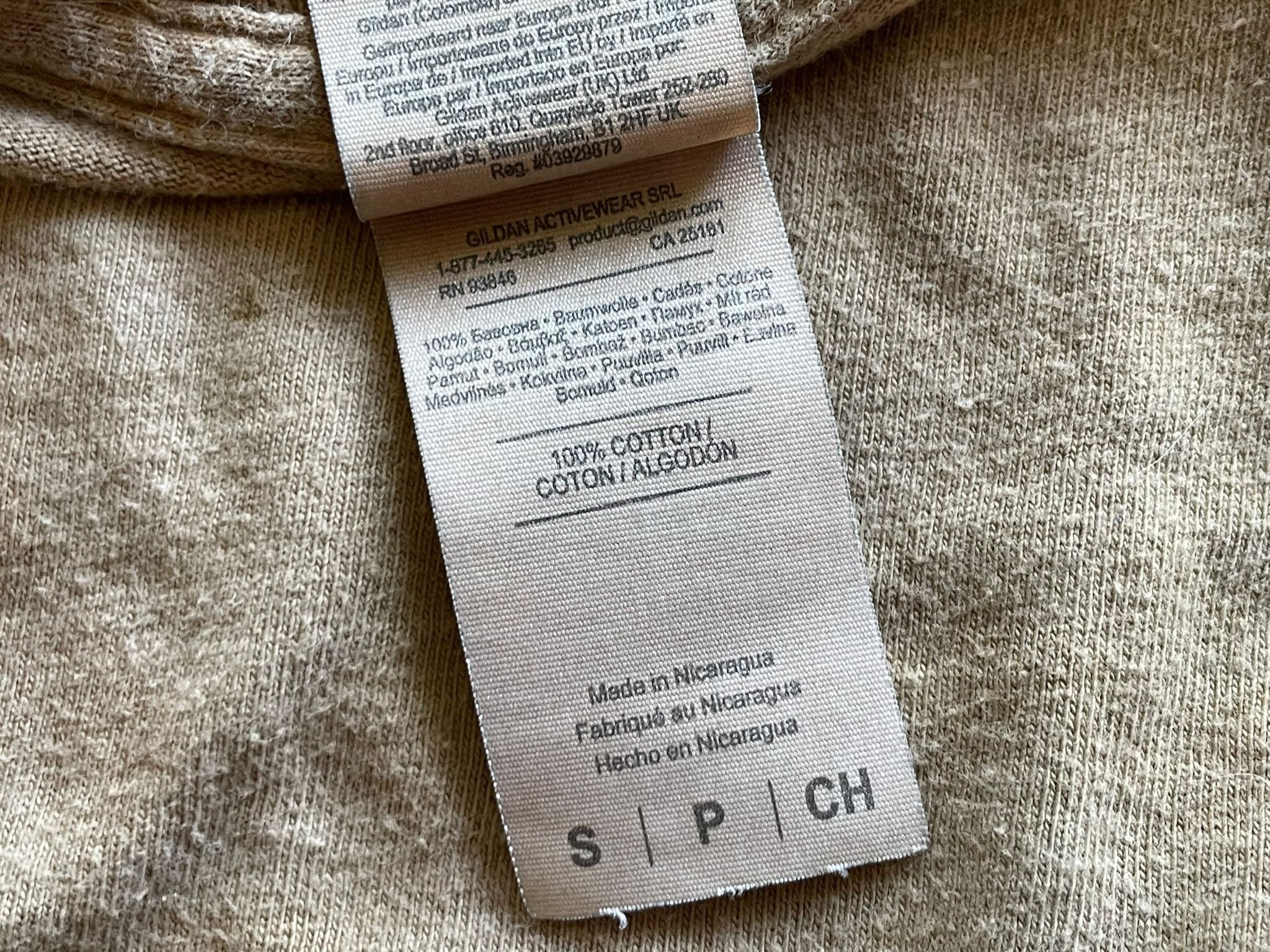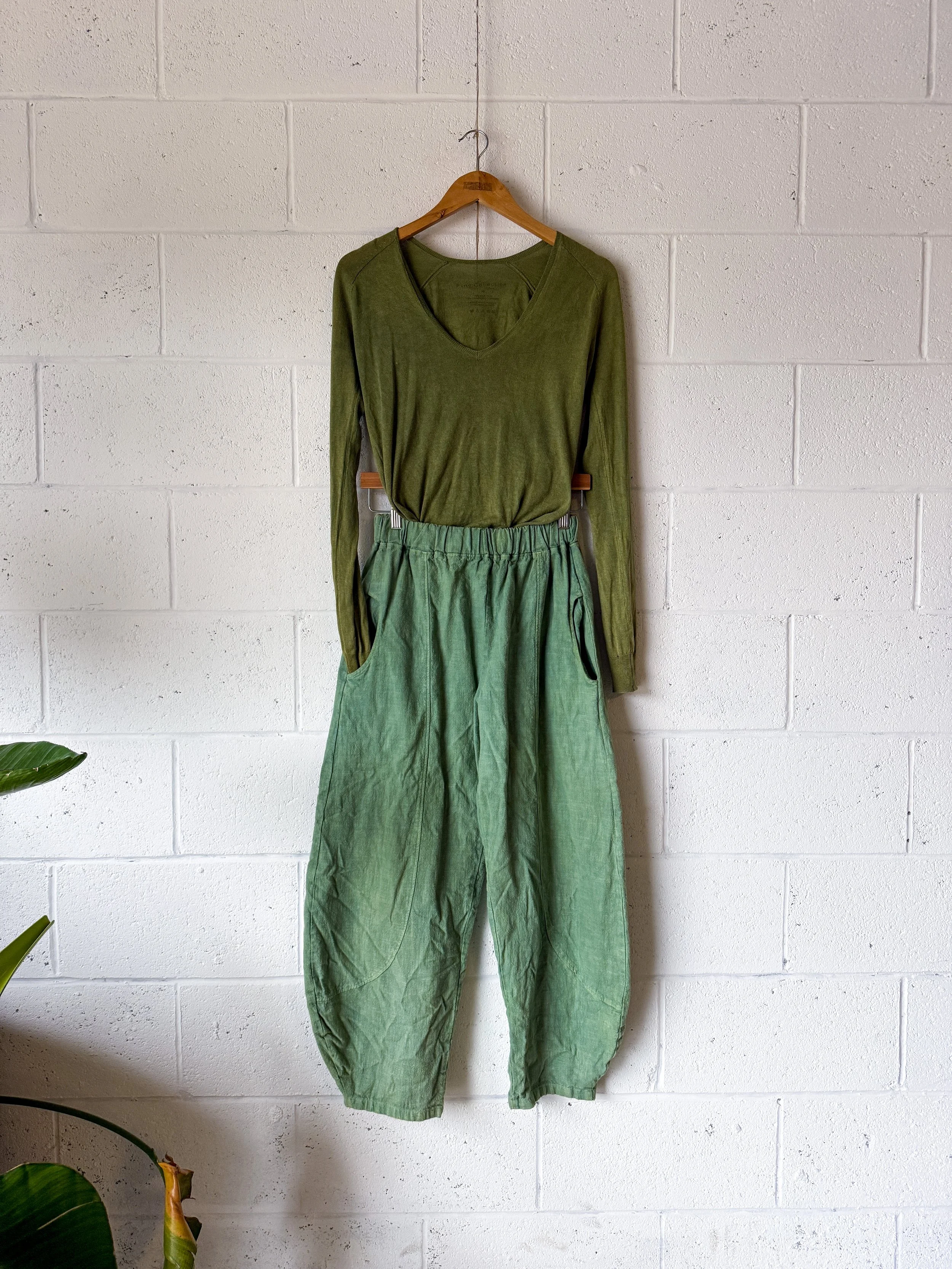What can I send to Green Matters to dye?
Hello to our slow fashion community <3
What a year it has been for the team at Green Matters Natural Dye Company. Since late 2022 we launched our first-ever small batch offering and have been pleasantly surprised with the growing interest in this service.
Winona, co-founder of GMDC, dressed in 100% indigo
What began as a single-color offering through the Community Indigo Vat has grown to include an additional 3 colors per month through our Dye Lot of the Month service. Anyone in North America can send garments and home textiles (like bedding, quilts, slipcovers, etc) to our studio to be overdyed in a dyebath made from flowers, seeds, and barks.
These overdye services are a great way to reinvent and repair beloved garments that have become stained or could use a color refresh. It’s also a great way to transform not-so-beloved garments into your new favorite thing.
While we developed this service to be for clothing, to our surprise we have had people in our slow fashion community utilize the service for the unexpected, like dyeing quilts, napkins, yarn for hand knitting and fabric for sewing projects.
Whatever form the fiber you send takes, we are thrilled that you are participating in a slower, more thought way of interacting with the textiles in the world around you.
I for one am guilty-as-charged when it comes to dressing in monochrome…. it’s perhaps the only current trend that I will nod my head with in agreement. Trends aside (and honestly, please, let’s leave them at the door) - these overdye services are a meaningful way to shift how we relate to our clothes. Garments are precious items. Earth was sewn, plants and animals stewarded, fibers spun, fabrics woven and sewn together to bring forth items we all take for granted, like t-shirts, denim jeans, a t-shirt dress.
Hanging out in the garden in cutch-dyed garments.
If you are a maker yourself, you know first-hand how resource intensive it is to sew or dye your own garment. I’m sure some of you have tried to spin your own yarn to knit up a pair of socks - maybe you even sheared a sheep somewhere along the way (something I hope to learn to do some day…). Creation is no small task, and our creations should be honored for all the precious time and materials that went in to them. Let’s keep our closets alive and seek ways to repair rather than replace!
So you may be wondering - what kind of garments can you send to GMDC to be dyed with botanical dyes?
Good question. Natural dyes can only bond with natural fibers, meaning you must be mindful with the garments you select to send to us. Let’s walk through the steps of determining whether your garment is made with natural or synthetic fibers.
Finding your garment tag
The most helpful tool that you have is already attached to your garment. If you are looking to send us a t-shirt, tank top, dress, jeans, etc. we recommend reviewing the care tag attached to your garment. This tag will typically include the fiber content of your garment as well as care instructions. Usually it is located on the back of the neck for tops, back of the waist for bottoms, and sometimes along a seam inside the garment.
What kind of garments can I send to you?
We accept any natural fiber garments, including:
protein fibers: silk, wool, alpaca, etc.
cellulose fibers: cotton, linen, hemp, etc.
synthetic cellulose fibers: modal, viscose, rayon, bamboo
We cannot dye items that are 100% synthetic, which includes fibers such as nylon, polyester, and acrylic.
Can you dye my garment if it’s 50% polyester?
Yes! We are able to dye fabrics that consist of at least 50% natural fiber. It is important to note that the presence of synthetic material can shift the color outcome of your garment, in terms of evenness and saturation.
I have a vintage garment and don’t know the fiber type - how do I find out?
Thanks for asking! We get this question a lot and the answer may shock you. The best way to find out whether your garment is natural or synthetic is to do something called a burn test.
If you are a sane person, you may be wondering - are you seriously asking me to set my grandmother’s vintage knit blanket on fire?
Well.. yes and no…
This video shows the different burn characteristics of synthetic versus natural fibers. The important takeaway is that natural fibers will burn like kindling, leaving a soft residue behind, and may smell like burning hair. In comparison, synthetic fibers melt and often ‘bead up’ into a small hard residue.
This test can be done on a single fiber - we recommend either pulling a loose thread from your textile or garment, or conducting this test on an inner seam that will not be visible from the outside. A piece of fuzz or pilling works too. If it both melts, and smells like burning paper/or hair it may be a blend.
So, how did it go? Did you determine the fiber content of your sweater without burning your house down? I certainly hope so.
If you’re looking for news on upcoming dye lot colors, join the Dye Lot of the Month Club! This free newsletter includes a sneak peak at upcoming colors as well as monthly discount codes for your orders… plus some pretty good music recommendations, like this album by Robohands:
Peace to you and your beloved ones,
bixa







